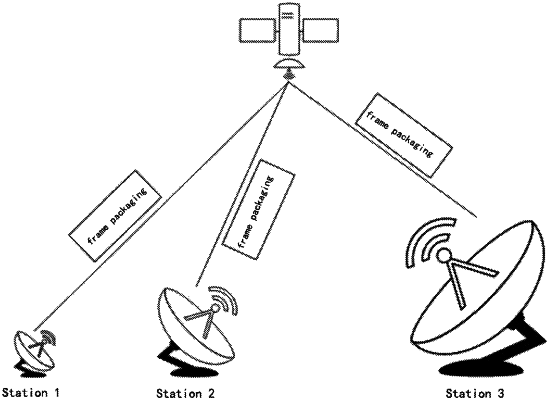| CPC H04W 72/0453 (2013.01) [H04B 1/69 (2013.01); H04B 7/18513 (2013.01); H04L 1/0003 (2013.01); H04L 1/0009 (2013.01); H04W 28/065 (2013.01); H04W 72/541 (2023.01)] | 10 Claims |

|
1. A method for allocating resource and accessing in open wireless channels, comprising:
covering multiple types of user terminal stations in the open wireless channels; and
making dynamic adaptive matching with reference to comprehensive change factors of a transmitting end and comprehensive change factors of a receiving end in each communication process,
wherein the comprehensive change factors of the transmitting end comprise changes of the following: a type and transmitting capacity of a transmitting station, a current state of the open wireless channels between the transmitting station and a relay node is, a working state of a receiving end of the relay node, and user services to be transmitted by the transmitting station; and
the comprehensive change factors of the receiving end comprise changes of the following: a type and receiving capacity of a receiving station, a current state of the open wireless channels from the relay node to the receiving station, and a working state of a transmitting end of the relay node;
adopting a multi-dimensional resource allocation method integrating a frequency domain, a time domains and a power domain, matching the comprehensive change factors of the transmitting end, comprising the changes of the type and transmitting capacity of the transmitting station, the changes of the current state of the wireless channels between the transmitting station and the relay node, the changes of the working state of the receiving end of the relay node, and the changes of the user services to be transmitted by the transmitting station;
allocating all frequency bands to the transmitting station if a transmission power of the transmitting station is equal to or more than a saturation power of a current channel;
allocating a corresponding proportion of a frequency bandwidth in a total bandwidth according to a principle of power and bandwidth balance if the transmission power of the transmitting station is less than the saturation power of the current channel, wherein an allocated frequency bandwidth is not less than a minimum bandwidth, and a proportion of the minimum bandwidth to the total bandwidth is in a range of 1/100-1;
allocating matching frequency bands to multiple transmitting stations to share a current power and frequency band resources,
wherein the multiple transmitting stations do not monopolize a whole channel corresponding to the comprehensive change factors of corresponding transmitting ends;
the multiple transmitting terminal stations do not monopolize a minimum frequency band, and the multiple transmitting stations with similar low capacity share the minimum frequency band in a mode of power domain resource allocation, if a ratio of the transmission power of the transmitting station to the saturation power of the current channel is lower than the proportion of the minimum frequency bandwidth to the total bandwidth;
to a next time slot, according to the same principle, matching with the comprehensive change factors of the transmitting end corresponding to all the transmitting stations in the open wireless channels, and reallocating power and frequency resources;
in a resource allocation mode of the transmitting end in each time slot, each of the transmitting stations transmits data frames in a unified format of frame packaging and transmits the data frames according to the method for allocating the resource and accessing in the open wireless channels.
|